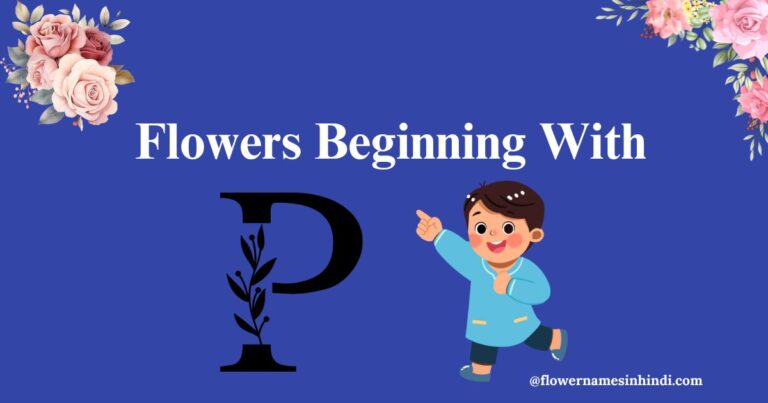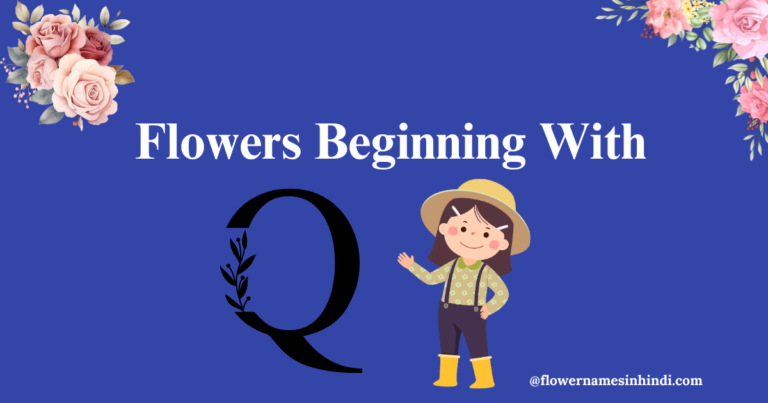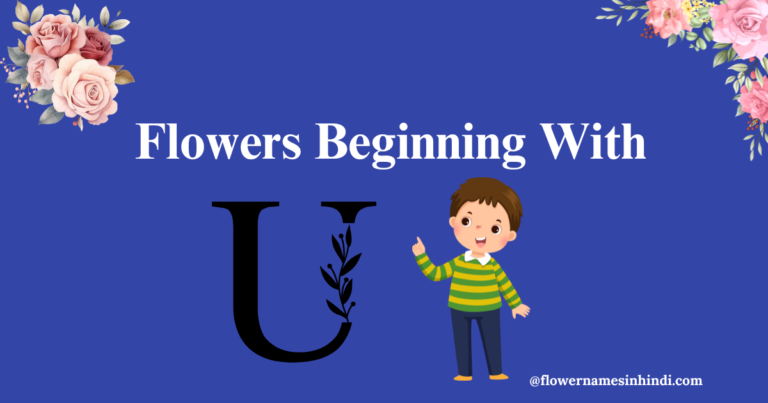Vibrant 16+ Flowers That Begin With V With Pictures
Flowers that begin with V feel like nature’s hidden treasures. They bloom in soft pastels and bold hues, adding beauty, fragrance, and charm to any garden. From graceful violets to cheerful annuals, V flowers bring joy and inspiration.
After exploring flowers that start with U, let us now dive into the vibrant world of V blooms.
🌼 Violet
🌼 Verbena
🌼 Veronica
🌼 Vinca (Periwinkle)
🌼 Virginia Bluebell
🌼 Valerian
🌼 Vanilla Orchid
🌼 Vetch
🌼 Viburnum
🌼 Viola
Vanilla planifolia
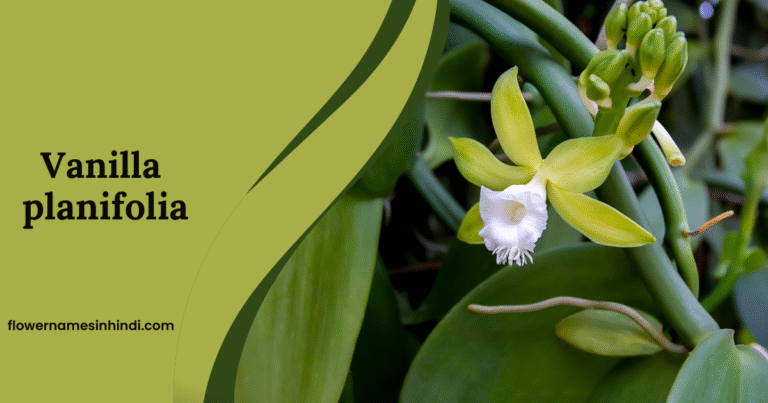
Vanilla planifolia, commonly known as Vanilla Orchid or Flat-Leaved Vanilla belongs to the Orchidaceae family. It is an evergreen vine that may grow on both the ground and trees. It occasionally grows as an epiphyte, without roots in the soil. In the wild, it may reach lengths of 15 meters and even 30 meters.
The cultivation of Vanilla planifolia is tedious because hand-pollination is often required. After pollination, the vanilla pods grow for many months before undergoing a sophisticated curing process that converts them into fragrant vanilla beans.
| Feature | Detail |
| Botanical name | Vanilla planifolia |
| No. of species | About 110 |
| Symbol | Purity, simplicity |
| Blooming time | Spring to summer |
| Origin/ Native to | Mexico and Central America |
Valerianella locusta: Flowers That Begin With V
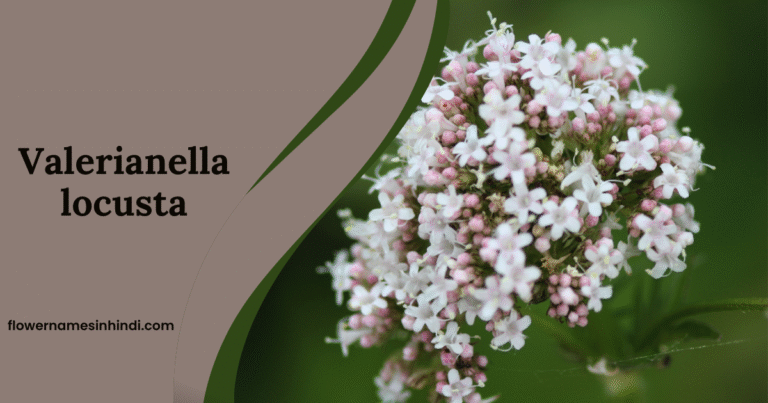
Valeriana locusta, commonly called mache, cornsalad, or lamb’s lettuce, is a small, herbaceous, flowering plant in the family Caprifoliaceae. It is also called the honeysuckle family. This species has tiny pale blue flowers and a slightly nutty flavor.
It is a hardy plant that can grow to zone 5, and in milder regions, it is planted as a winter green. The leaves are soft, with a somewhat nutty, buttery flavour that complements other mild or slightly bitter greens. It prefers full to partial sunlight, well-drained soil and cooler weather for ideal growth.
It is rich in nutrients, including vitamins A, C, and folate, making it a healthy complement to meals.
| Feature | Detail |
| Botanical name | Valerianella locusta |
| No. of species | About 80 species in the genus |
| Symbol | Delicacy, Calmness, simplicity, and nourishment |
| Blooming time | Late winter to early spring |
| Origin/ Native to | Europe, North Africa, and Western Asia |
Vanda coerulea
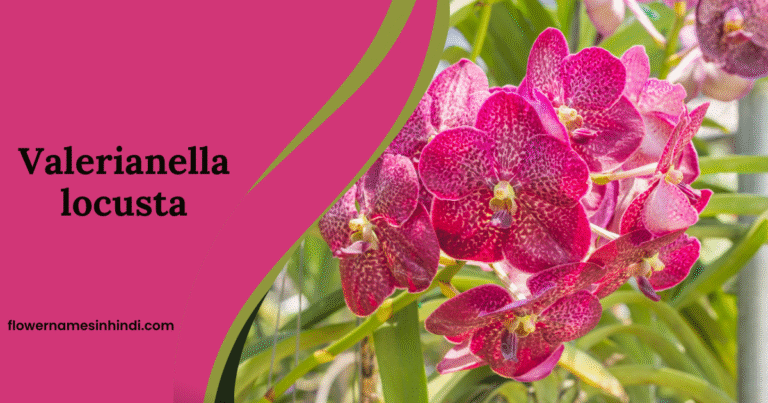
Vanda coerulea, commonly known as blue orchid has bluish purple flowers, which are very long-lasting compared to other orchids. It is part of the Orchidaceae family. It is valued for its brilliant color and beauty, making it the best choice among collectors.
Blue orchids require special growth conditions, such as high humidity and strong, indirect lighting. While they might be difficult to cultivate, the stunning beauty of their blossoms is well worth the effort.
| Botanical name | Vanda coerulea |
| No. of species | Approximately 80 species in the Vanda genus |
| Symbol | Rarity, uniqueness |
| Blooming time | Late summer to early autumn |
| Origin/ Native to | India, Myanmar, Thailand |
Vriesea: Flowers That Begin With V
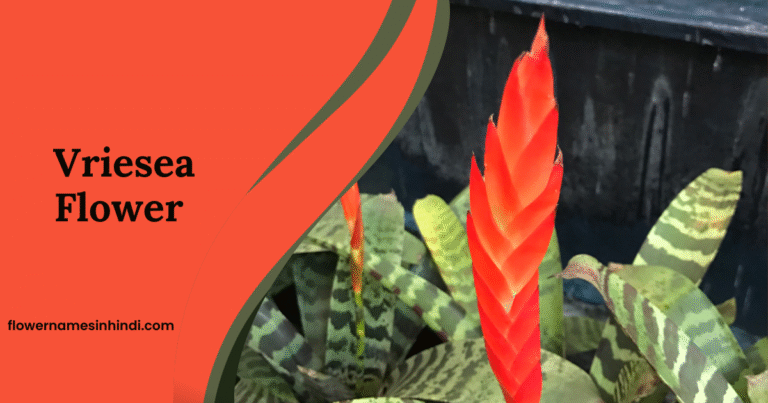
Vriesea, a genus of flowering plants in the family Bromeliaceae, has flowers of vibrant colors like orange, red or yellow. It is widely utilized in modern and minimalist designs, allowing its bold lines and brilliant colours to shine. It’s also a popular houseplant since it can tolerate low light and requires little water.
Vrieseas are easy-to-care houseplants. They grow well in bright, indirect light and need only moderate watering. Their colorful blossoms can last for months, adding beauty indoors or outdoors. With their bold look, Vrieseas attract plant lovers who want a touch of tropical charm in their collection.
In the wild, tiny frogs sometimes use Vriesea rosettes as a “bathtub,” splashing around in the rainwater the plant collects.
| Botanical name | Vriesea |
| No. of species | About 250 |
| Symbol | Passion, strength, and exotic beauty |
| Blooming time | Varies; typically spring and summer |
| Origin/ Native to | Central and South America |
Verbesina
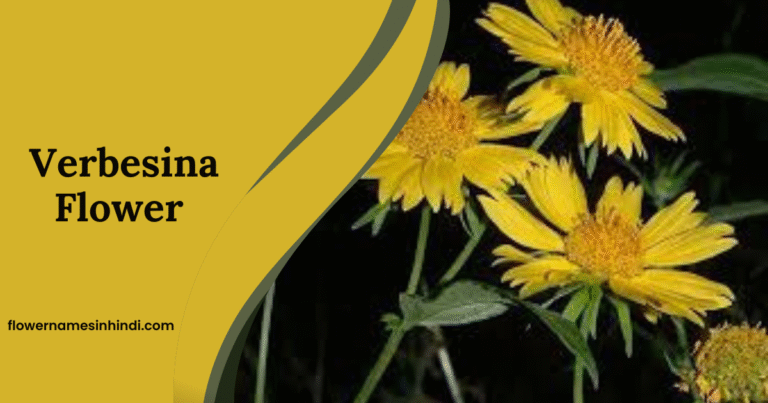
Verbesina is a flowering plant in the Asteraceae family, often called crownbeard. Its species usually produce white or yellow blooms that look like small sunflowers. The name Verbesina likely comes from its leaves, which resemble those of Verbena. These plants often grow in prairies and along roadsides, where their tall stems carry clusters of daisy-like flowers.
Verbesina thrives in almost any soil, making it a hardy choice for borders, wildflower gardens, and prairie landscapes. With little care, it brings cheerful colour and supports pollinator-friendly spaces, adding a bright, rustic charm to natural garden designs.
| Botanical name | Verbesina |
| No. of species | Over 350 species |
| Symbol | Resilience, growth, and natural beauty |
| Blooming time | Late summer to early fall |
| Origin/ Native to | North and Central America |
Veronica: Flowers That Begin With V
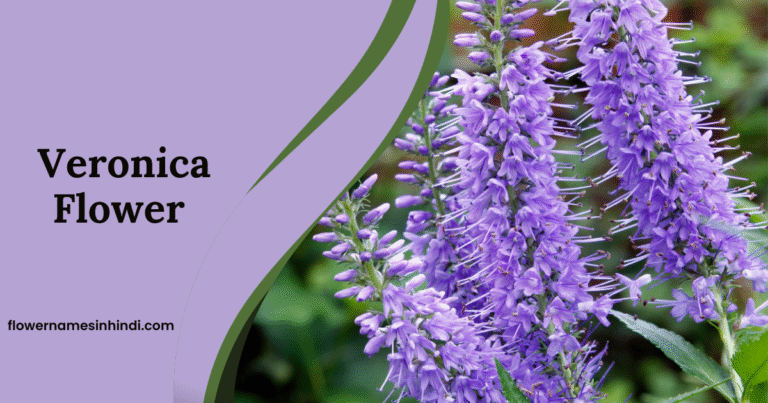
Veronica is the largest genus in the Plantaginaceae family and was once part of the Scrophulariaceae family. It is also called speedwell, bird’s eye, or gypsyweed. This perennial produces beautiful spikes of small tubular flowers in shades of blue, pink, white, and purple, making it a favorite in many gardens.
Veronica is easy to grow, needs little care, and resists pests, so it suits gardeners of all levels. It thrives in borders, rock gardens, and containers while attracting bees and butterflies, adding both charm and ecological value to any garden.
Victorians gave Speedwell flowers as a symbol of loyalty and good fortune.
| Botanical name | Veronica |
| No. of species | Over 500 species |
| Symbol | Fidelity, faithfulness, and protection |
| Blooming time | Late spring to early autumn |
| Origin/ Native to | Europe, Asia, and North America |
Venus’s Looking Glass
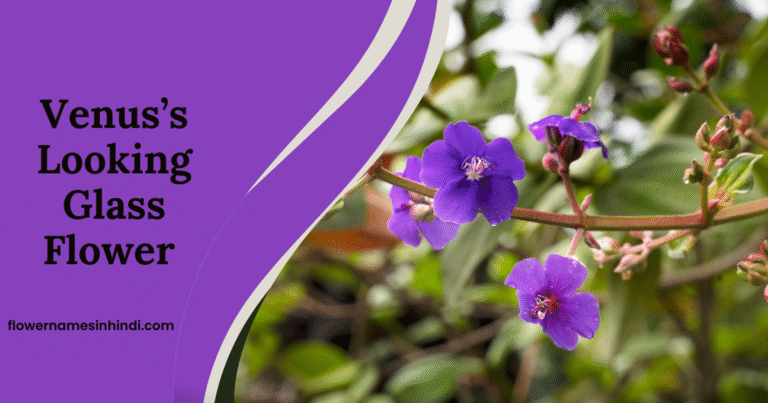
Venus Looking Glass is a delicate wildflower from the Campanulaceae family. It grows as an annual plant and is admired for its star-shaped violet blue flowers. You can often find it in meadows, open woods, and along roadsides where it adds a splash of colour.
The seeds have a shiny surface that looks like tiny mirrors, which is how the plant got its name. Venus Looking Glass is easy to care for and attracts many pollinators, making it a rewarding choice for gardens. It works well in wildflower mixes or natural plantings and gives any outdoor space a fresh look.
| Botanical name | Triodanis perfoliata |
| No. of species | 6 species within the Triodanis genus |
| Symbol | Love, beauty, simplicity |
| Blooming time | Late spring to early summer |
| Origin/ Native to | North America |
Valerian
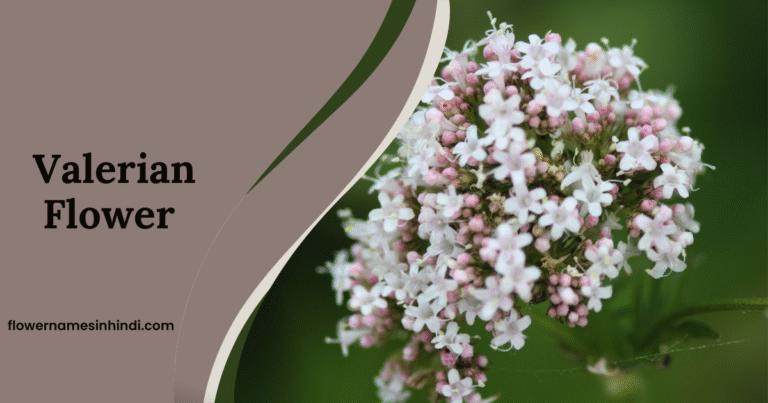
The name Valerian comes from the Latin word valere, which means to be strong or healthy. This perennial flowering plant has been used for centuries as a natural remedy for insomnia, anxiety, and nervousness. It grows tall flower spikes that add beauty and height to garden borders while also serving as a nectar source for pollinators.
Valerian is both useful and attractive. Gardeners value it not only for its medicinal benefits but also for its graceful blooms and calming presence. Whether planted for healing or decoration, Valerian makes a flexible and rewarding addition to any garden landscape.
This flowering plant has been used for centuries as a natural remedy for insomnia, anxiety, and nervousness.
| Botanical name | Valeriana officinalis |
| No. of species | Approximately 250 species in the Valerian genus |
| Symbol | Health, calm, serenity |
| Blooming time | Late spring to early summer |
| Origin/ Native to | Europe and Asia |
Verbena: Flowers That Begin With V
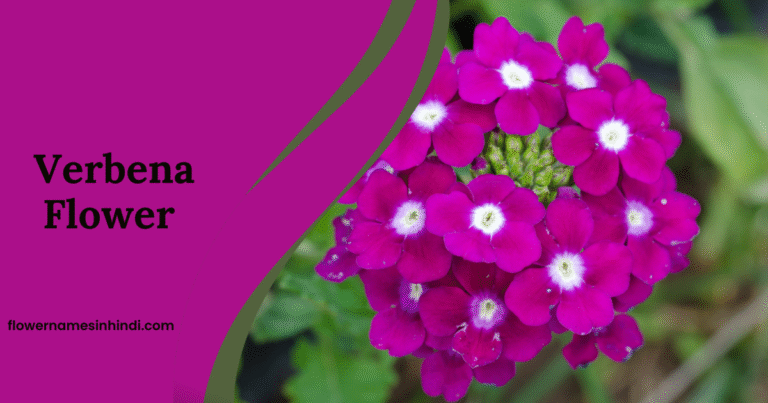
Verbena, also called vervain, is a versatile flowering plant in the Verbenaceae family. It grows as both annual and perennial, with simple opposite leaves that are often hairy. This hardy plant produces clusters of small, colorful blooms in shades of purple, pink, red, and white.
Verbena is more than just pretty. It attracts bees and butterflies, helping to keep your garden healthy and lively. Known for its stress-relieving properties, it also offers a calming touch.
| Botanical name | Verbena |
| No. of species | Over 150 species |
| Symbol | Healing, protection, creativity |
| Blooming time | Late spring through fall |
| Origin/ Native to | Americas and Europe |
Violet
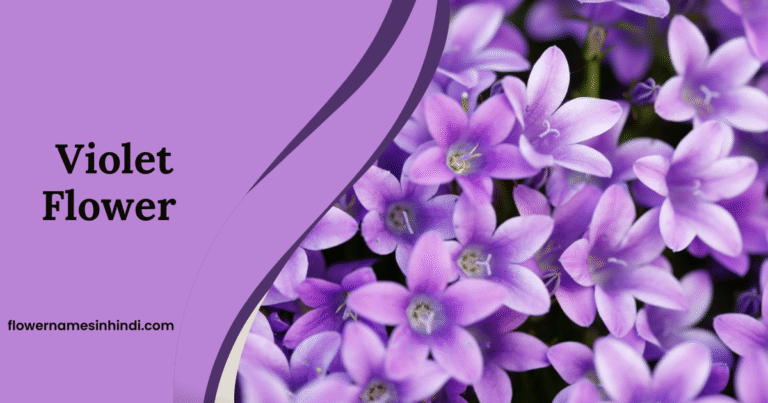
Violet is a graceful perennial from the Violaceae family, loved for its delicate heart-shaped leaves and dainty blooms. It comes in shades from deep purple to soft white, bringing elegance and charm to shaded gardens, borders, and containers.
Its subtle beauty makes it a favorite for adding a gentle touch of color where brighter plants dominate.
Violets are edible and often used to garnish dishes or flavor floral syrups. They also hold a place in folk medicine, valued for their soothing and anti-inflammatory properties that may ease headaches and support respiratory health.
| Botanical name | Viola |
| No. of species | 680 species |
| Symbol | Modesty, loyalty, and love |
| Blooming time | Early spring to late fall |
| Origin/ Native to | Northern Hemisphere |
Vinca: Flowers That Begin With V
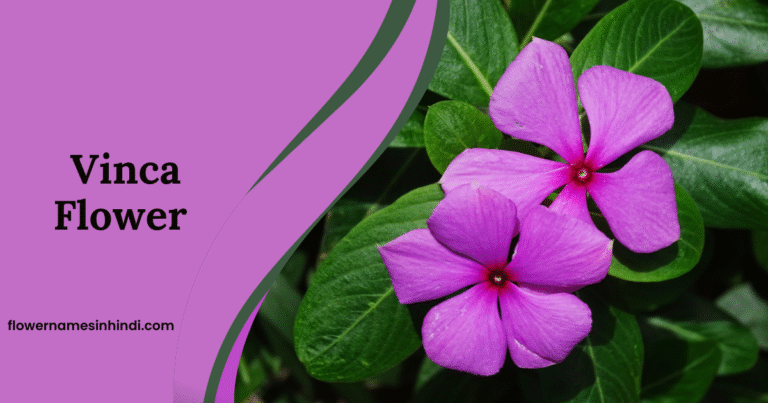
The name Vinca comes from the Latin word vincire, meaning to bind or fetter. Its common name is periwinkle, and it belongs to the Apocynaceae family. These plants are subshrubs or herbs with thin trailing stems that can reach 1–2 meters long but stay low to the ground. Their star-shaped blooms appear in blue, violet, and white colors.
Vinca is often grown as groundcover because it spreads quickly and requires little care. Apart from its beauty, periwinkle is valued for its medicinal uses. It has been linked to treatments for high blood pressure and is also a natural source of vincristine, an alkaloid used in cancer therapy.
| Botanical name | Vinca |
| No. of species | 8 species |
| Symbol | Friendship, beauty, and endurance |
| Blooming time | Spring to early fall |
| Origin/ Native to | Europe and the Mediterranean region |
Viburnum plicatum
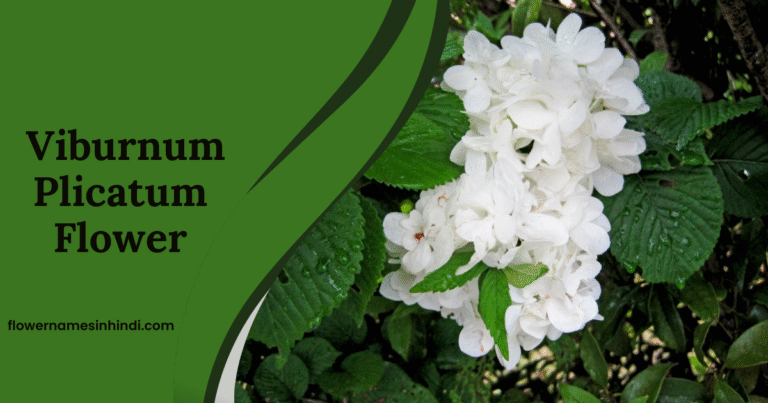
Viburnum plicatum, commonly called Japanese Snowball, belongs to the Adoxaceae family. This deciduous shrub is famous for its large, round clusters of white blooms that look like snowballs.
It can grow up to 3 meters tall, with opposite, oval-shaped leaves that have serrated edges, adding texture to its beauty.
The Japanese Snowball grows best in partial shade to full sun and prefers well-drained soil. Although it can handle drought, regular watering helps it thrive.
Its berries not only feed birds but also bring wildlife closer to gardens, turning it into a lively nature spot.
| Botanical name | Viburnum plicatum |
| No. of species | 150-175 species |
| Symbol | Beauty, abundance, and grace |
| Blooming time | Late spring to early summer |
| Origin/ Native to | Japan and Korea |
Vanda Orchid: Flowers That Begin With V
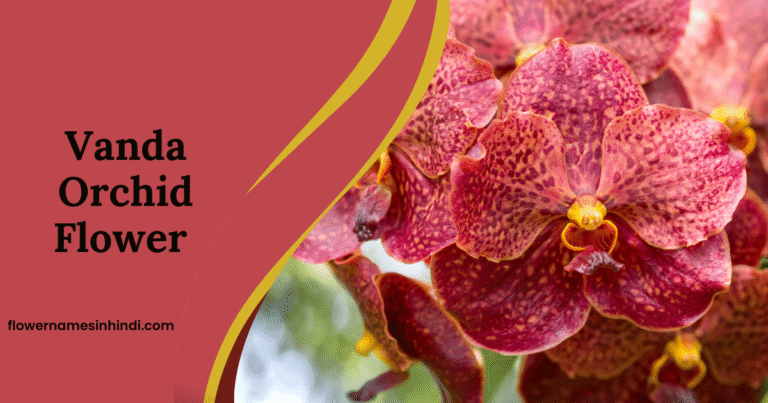
Vanda belongs to the orchid family Orchidaceae. The name comes from the Sanskrit word for the plant Vanda roxburghii. This tropical orchid is famous for its large, showy flowers in bright blue, purple, and yellow. The blooms often have detailed patterns and a strong fragrance, making them a true highlight in gardens and flower arrangements.
They need high humidity, good air circulation, and strong but indirect light to grow well. Though they demand regular care, the reward is breathtaking flowers that stay fresh and beautiful for weeks.
| Botanical name | Vanda |
| No. of species | 90 species |
| Symbol | Beauty, strength, and grace |
| Blooming time | Year-round, with peak bloom from spring to fall |
| Origin/ Native to | Southeast Asia (e.g., Thailand, Malaysia, Indonesia) |
Viola Tricolor
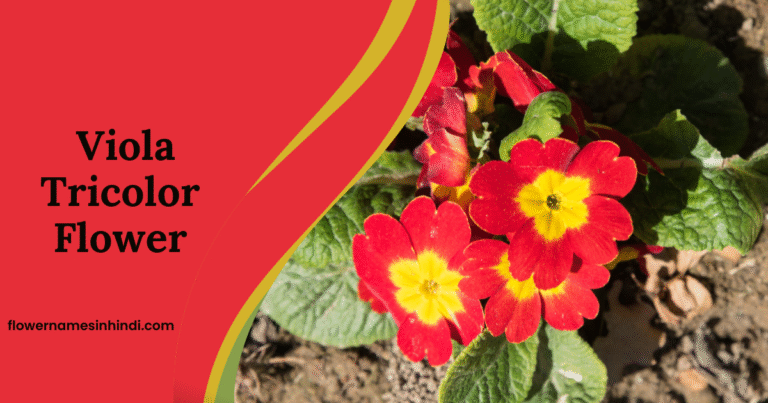
Viola tricolour, also called Wild Pansy or Johnny Jump Up, is a cheerful European wildflower. This small plant shows off flowers in purple, yellow, and white. It usually grows as an annual or a short-lived perennial and reaches about 15 cm (6 in) tall with tiny blooms around 1.5 cm wide. You can often spot it in grasslands, farms, and open soils that are either acidic or neutral.
Gardeners love Johnny Jump Ups because they are easy to grow and self-seed, so they return each year without much effort. Besides adding beauty to the garden, their edible flowers make a fun garnish for salads and desserts, giving them both decorative and practical value.
In ancient times, people brewed Viola tricolour into herbal teas to ease coughs, skin problems, and even insomnia.
| Botanical name | Viola tricolor |
| No. of species | Several varieties, including hybrids |
| Symbol | Love, admiration, and remembrance |
| Blooming time | Spring to early summer; can rebloom in fall |
| Origin/ Native to | Europe and Western Asia |
Viburnum
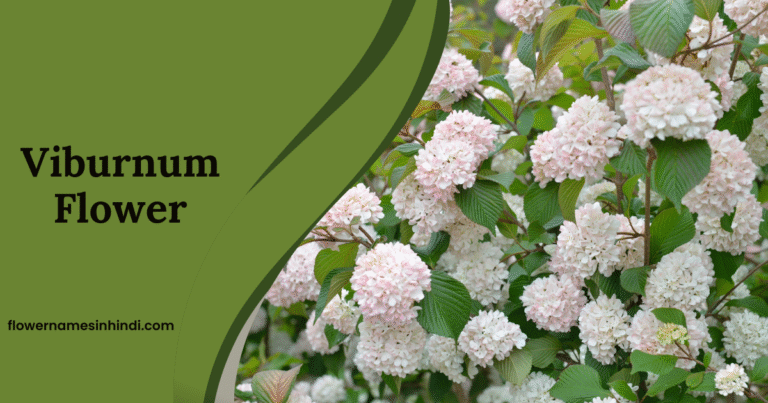
Viburnum is a genus of flowering plants in the family Adoxaceae. Scientists reclassified it based on molecular studies, as it was once placed in the honeysuckle family Caprifoliaceae. This genus includes shrubs and small trees known for their pretty flowers, colorful berries, and decorative leaves.
Most Viburnum plants grow best in full sun to partial shade, where they produce the most flowers.
They need regular watering, especially in dry weather, and prefer moist, well-drained soil. Adding organic matter to the soil improves their growth and health.
| Botanical name | Viburnum |
| No. of species | Over 150 species |
| Symbol | Peace, harmony, and abundance |
| Blooming time | Late spring to early summer |
| Origin/ Native to | Temperate regions of North America, Europe, and Asia |
Conclusion of Flowers That Begin With V
Flowers starting with V bring one of the most fascinating selections for gardeners and plant lovers. Each flower carries its own charm, symbolism, and beauty while thriving in a wide range of growing conditions.
By adding V-flowers to your garden, you not only enjoy their beauty but also invite pollinators, fragrance, and diversity into your space. If you are eager to explore more about flowers and their names, visit flowers name in Hindi.
Related Articles:
- Flowers beginning with U
- Flowers that begin with T
- Flowers starting with S
- Flowers that start with R





